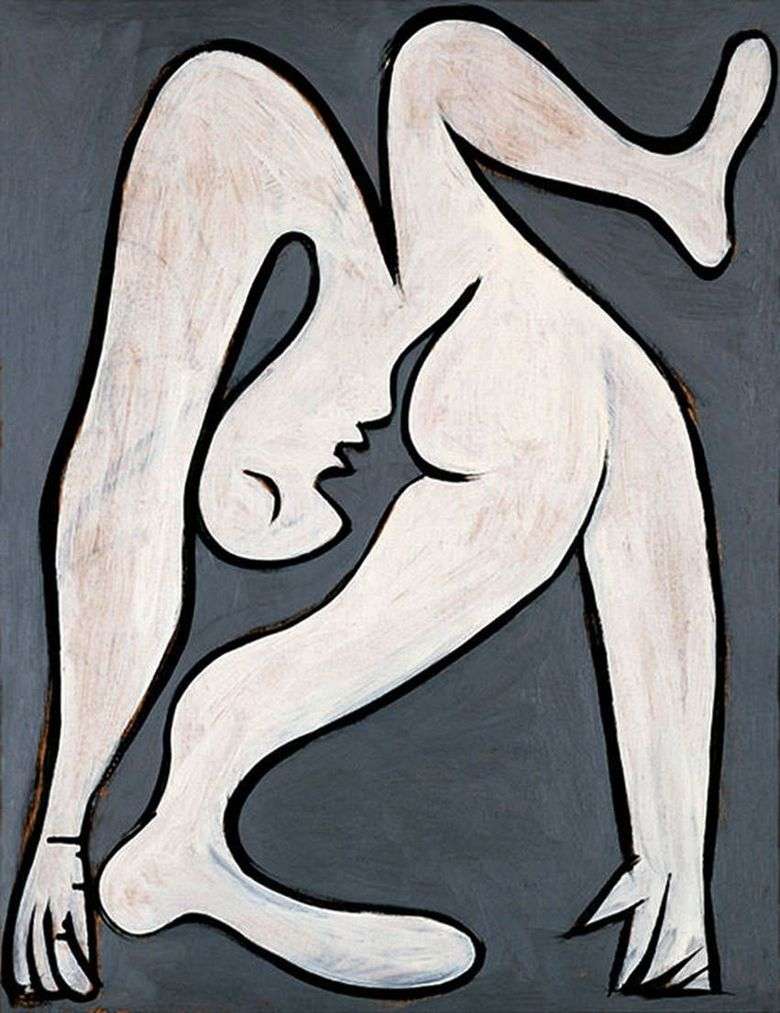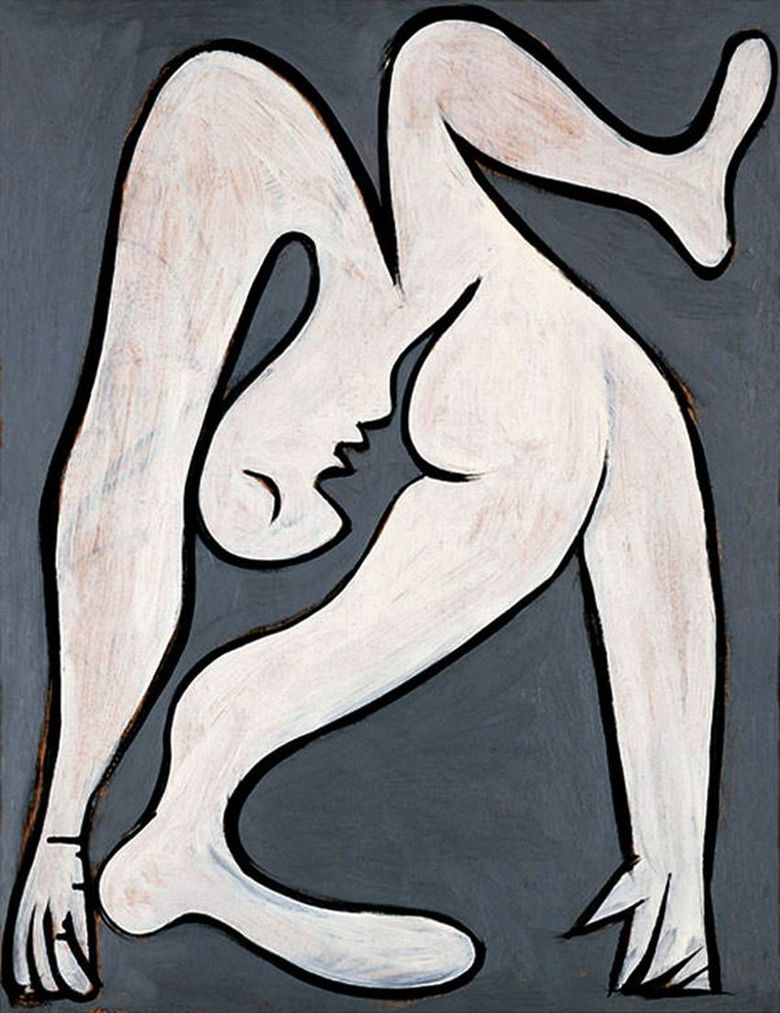
In the winter of 1929, Picasso returned to the theme of the Acrobats of the pink period and created six canvases on this subject. The chronological order of the series is established thanks to the dates indicated by the artist on the reverse side. The first of the series was the work “Blue Acrobat”, written in November 1929 – January 1930. There were also fantastic “Minotaur” and “Swimmer”. A possible visual source may be a less well-known image of a female figure in the Hathor temple, which is part of the Dendera temple complex.
This image is in the book belonging to the artist: on it the naked female figure is made in the form of a bridge. The initial inspiration for the series “Acrobats”, most likely, arose from the artist when visiting the circus Medrano. There are also drawings of the years 1924-25 with images of dancers.
The unnaturalness of this figure – without the usual center, with the face opposite the buttock, scattered legs and parallel arms – sends us to the figures of rotation, such as the swastika; . The light figure on a dark background is enclosed in a thick black outline, enhancing the effect of acrobat’s weightlessness. In 1929, a discussion broke out on the topic: to consider Picasso a surrealist or not.
It would seem that these canvases are a good confirmation of this, but the artist himself later said that he “was never out of reality.” French writer and ethnologist Michel Leiris denied any connection between Picasso and the surrealists, on the contrary, arguing that “his creatures are excited and attracted precisely because of their reality.”
 Family of an acrobat with a monkey by Pablo Picasso
Family of an acrobat with a monkey by Pablo Picasso Boy with a dog by Pablo Picasso
Boy with a dog by Pablo Picasso Acrobat – Pablo Picasso
Acrobat – Pablo Picasso Acrobatie – Pablo Picasso
Acrobatie – Pablo Picasso Lovers by Pablo Picasso
Lovers by Pablo Picasso Green Bowl and Black Bottle by Pablo Picasso
Green Bowl and Black Bottle by Pablo Picasso Nude Green Leaves and Bust by Pablo Picasso
Nude Green Leaves and Bust by Pablo Picasso Family of Comedians by Pablo Picasso
Family of Comedians by Pablo Picasso